
This neighborhood blog is about Boyle Heights. To vote for other neighborhoods to be explored on California Fool’s Gold, please let me know which in the comment section.
The area now known as Boyle Heights was historically inhabited by the Tongva, who arrived there from the Sonoran Desert to the east some 3,500 years ago. The Tongva village of Apachiangna was located in or near the neighborhood. They remained there for centuries until their displacement by the Spaniards. When the area was still part of Mexico, it was known as Paredón Blanco. Prominent families in Paredón Blanco included the Lopez and Rubio households.
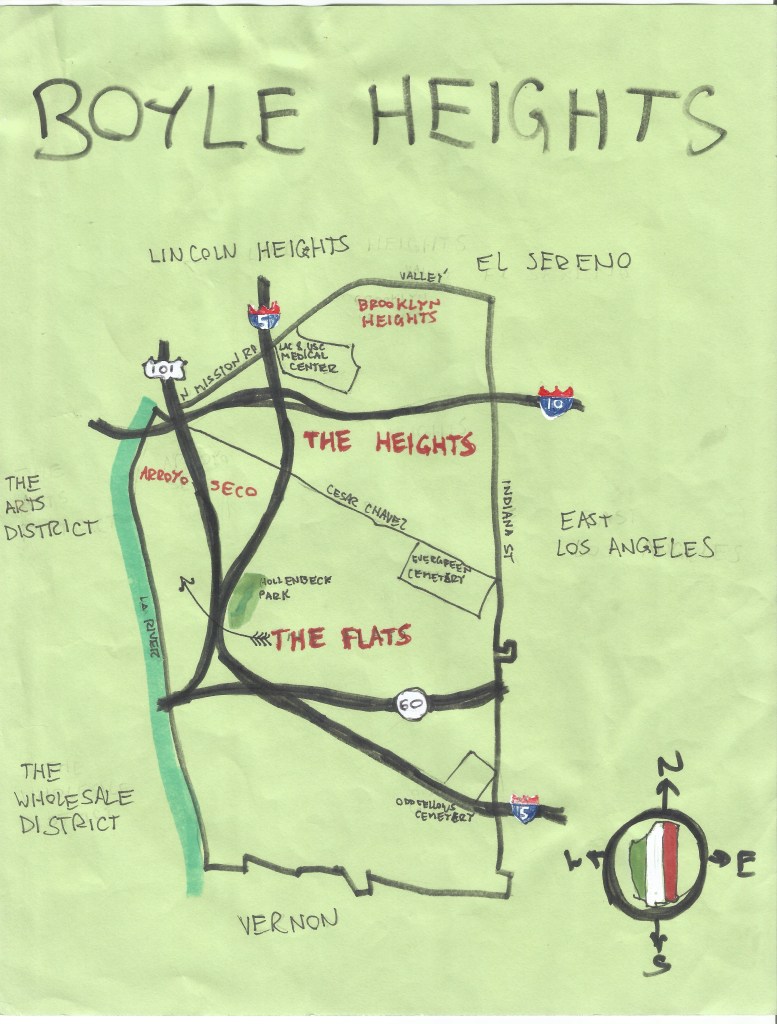
In the 1830s, a cemetery near Soto and Breed was removed and bodies displaced in order to make room for a new elementary school. Though the bodies were relocated to Evergreen Cemetery, there have been reports of various paranormal activities within the walls of Breed Street Elementary School, presumably the work of the lost souls who once rested there.
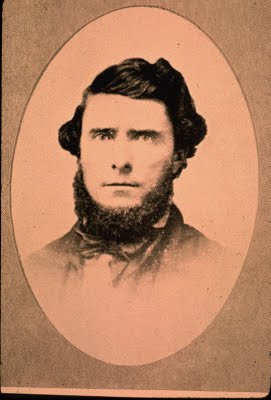

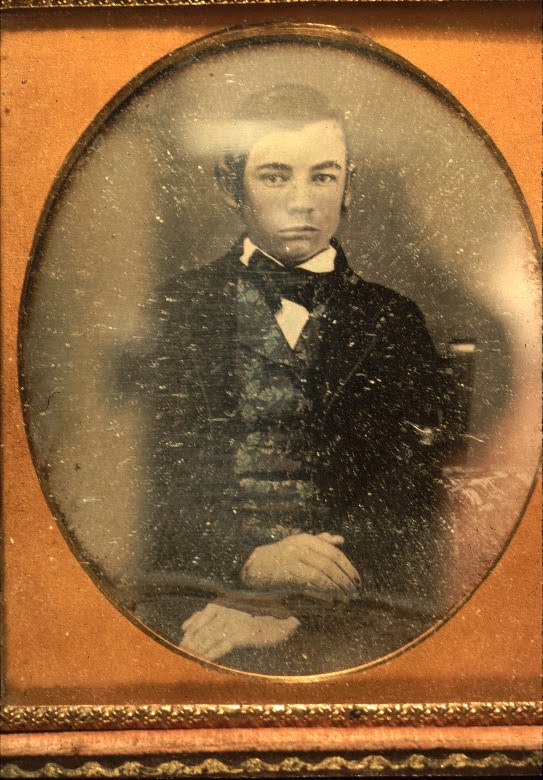
The neighborhood acquired its current name when Irishman Andrew Boyle moved to the area in 1858. His son-in-law, William H. Workman, was the mayor of Los Angeles and was largely responsible for developing Boyle Heights.
FROM SLUMS TO PROJECTS
Boyle Heights was traditionally viewed as being divisible into two sections, the more affluent section, The Heights (Boyle and Brooklyn), and the more downscale section, The Flats (or the Russian Flats). Until the 1930s, The Flats were home to slums that noted reformer Jacob Riis compared unfavorably to those in New York. In fact, the slums around Utah Street were considered by at least one source to be the “most abominable in the country.”
In the 1940s, the slums were razed and replaced with the Pico/Aliso Village (1942) and Estrada Courts (1943) housing projects. By the 1970s, the neglected projects had been allowed to fall into disrepair and served as the breeding grounds for local gangs including Primera Flats, AV Fellas, AV Rockers, Varrio Nuevo Estrada, and Alcapone. Pico/Aliso Village was, in turn, razed in the 1990s and replaced with the New Urbanist-style and Pueblo del Sol housing project. The Estrada Courts project still stands and today is more recognized for its many murals and preservation efforts than gang violence.
CHANGING DEMOGRAPHICS OF BOYLE HEIGHTS
As of 2000, Boyle Heights was 94% Latino with a very small (2.3%) Asian minority. However, in a world where the movements of even a few white people are attacked either as “white flight” or gentrification (depending on the direction of their movement), the existence of a 1.6 % white minority threatens nearly complete homogeneity. As I walked along the sidewalk in this mere hours-long exploration, a cholo bitched “Too many f—ing weddos around!” as he passed, presumably for my benefit. What this hater probably didn’t know is that, in the first half of the 20th century, Boyle Heights was historically one of the most diverse neighborhoods in the city, home to large numbers of Croatian, Jewish, Japanese, Mexican, and Russian immigrants. It is only in recent decades that it has become one of the least ethnically diverse neighborhoods in the city.
JAPANESE IN BOYLE HEIGHTS
After the 1882 passage of the Chinese Exclusion Act, many Japanese immigrated to California to fill the resultant void in the labor force. After the San Francisco Earthquake of 1906, many Japanese citizens moved away from the bay, often to Boyle Heights. Faced with growing numbers of non-Chinese Asian immigrants, the Asian Exclusion Act was signed in 1924 to broaden discrimination against other Asian Americans. By then, however, Little Tokyo (just across the river) and Boyle Heights were already home to about 30,000 Japanese-Americans, including famed artist Isamu Noguchi.
After the attack on occupied Pearl Harbor‘s military outpost, hundreds of Japanese residents of the Japanese fishing village on Terminal Island were given 48 hours’ notice to evacuate their homes so that a new military base could be built there. Many of the displaced moved to the Forsythe Hostel in Boyle Heights. Not long after, however, they along with almost all Japanese-Americans were rounded up and shipped to concentration camps.
After World War II ended, few Japanese returned to the neighborhood, preferring, in many cases, to move to the suburbs of Gardena, Monterey Park, Torrance, Pasadena, San Pedro, Compton, Crenshaw, and Long Beach (rather than back to Boyle Heights, Little Tokyo, or Little Osaka). The highly acclaimed restaurant, Otomisan, established in 1956, is one of the few reminders of this more diverse era. Other Japanese vestiges include Haru Florist, Hayashi Realty, the Nichiren Buddhist Temple, the Rafu Chuo Gakuen School, Rissho Kosei-kai Buddhist Church, and Tenrikyo Mission.
RUSSIANS IN BOYLE HEIGHTS
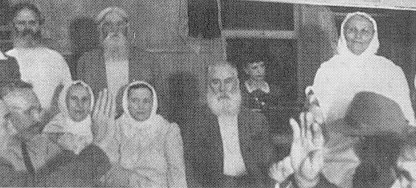
The next major wave of immigrants to Boyle Heights came with the arrival of large numbers of Russians, many whom immigrated to avoid czarist persecution, and most of whom settled in the Flats, which is why they’re also known as the Russian Flats.. A large number were Molokans, a religious sect that refused to follow orthodox practices. By the 1930s, there were six Molokan churches in Boyle Heights. Later many Russian Jews fled to Los Angeles. In the 1940s, the nexus of Russians in Los Angeles shifted to West Hollywood (home to Little Odessa), although there are today large numbers of Russians in Agoura Hills, Beverly Crest, Beverly Grove, Beverly Hills, Beverlywood, Calabasas, Cheviot Hills, Encino, Fairfax, Sherman Oaks, and Valley Village.
MEXICANS IN BOYLE HEIGHTS
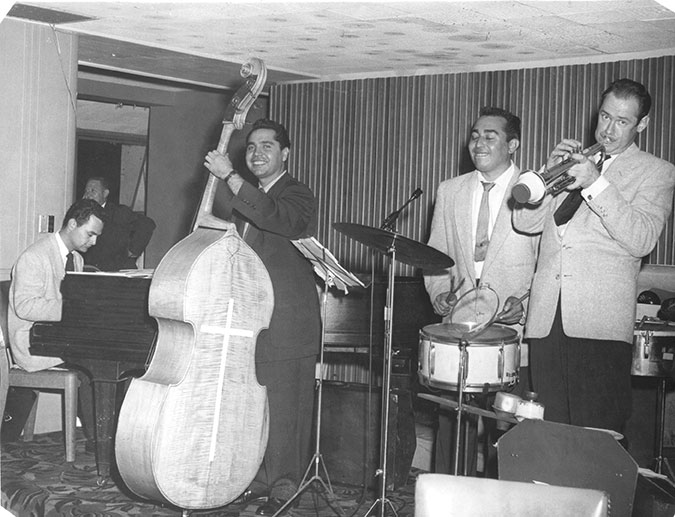
As previously mentioned, Boyle Heights used to be in Mexico. However, after the US took over, many more Mexican began to move to Boyle Heights in the 1910s, often fleeing the violence of the Mexican Revolution. In the 1930s, large numbers of Mexican-Americans were, regardless of their country of origin, deported to Mexico. When the Japanese were interred in the 1940s, however, Mexicans were actively encouraged to return to fill the void in the labor force.
Whereas most of the other early groups left the neighborhood, Boyle Heights’ Latino population has steadily increased over the years. Reflecting the continuing Latinization of the neighborhood, in 1994, Brooklyn Avenue was renamed Cesar E. Chavez Avenue. Most nights it is a bustling street, and not just by Los Angeles standards.
For many years, one prominent Mexican-American resident, Ross Valencia, was known as “Mr. Boyle Heights.” Since his death last year, a small park has been dedicated to his memory.
JEWS IN BOYLE HEIGHTS
By the 1920s, Boyle Heights had the largest Jewish population west of the Mississippi River. Today, one of the few visible vestiges of Boyle Heights’ (particularly the Brooklyn Heights tract’s) historic Jewish population is the Breed Street Shul, which, when it opened in 1923, was the first synagogue on the west coast.
At the time, the Jewish population was centered around Brooklyn and Soto, where there were many Jewish-owned businesses. Few Angelenos likely know that the famed deli Canter’s was actually started in Boyle Heights (as Canter Brother’s Delicatessen) in 1931. In 1941 a second location opened on Fairfax, in the Fairfax District, to where, by then, much of the city’s Jewish population had relocated. The original Brooklyn Height location remained open until at least 1967.
CULTURE IN MODERN BOYLE HIGHTS
Proyecto Jardín is a unique community garden and art and cultural space created in 1999 in the shadow of White Memorial Hospital. It includes a performance space, art, and garden plots. It’s also closely associated with Ovarian-Psycos, an all-female Eastside bicycle crew.
CAINE’S ARCADE
Caine’s Arcade from Nirvan Mullick
Nestled in the northwestern-most corner of Boyle Heights is Caine’s Arcade. Because I still run into people who’ve never heard of it, Caine Monroy built this amazing, elaborate arcade out of discarded cardboard boxes in the back of his father’s auto parts store. In 2012, filmmaker Nirvan Mullick made a short film about the arcade which he shared on Hidden Los Angeles and the whole, heartwarming thing went viral in a huge way.
MUSIC IN BOYLE HEIGHTS


In Mariachi Square, there stands a kiosk donated to the neighborhood by the state of Jalisco –the home of Mariachi. Many mariachis live at the Boyle Hotel, built in 1889 and known to almost everyone as “Mariachi Hotel.”
Voz de America performing Los Abuelos de la Nada‘s “Mil Horas” at the 19th Annual Mariachi Festival
On Saturdays, the square plays host to many Mariachis. For the last twenty years, there’s been an annual Mariachi Festival. On Fridays and Sundays at Mariachi Plaza, there’s an open-air market with live music, dancing, and food.
Artist Mentor Huebner was born on 19 July 1917 in Boyle Heights. He grew up not only to be a prolific painter but also gained exposure from his work as an iconic production illustrator on over 250 films, including 1951’s Quo Vadis, 1956’s Forbidden Planet, 1959’s Ben-Hur and North By Northwest, 1960’s The Time Machine, 1971’s Fiddler on the Roof, 1976’s King Kong, 1982’s Blade Runner, and 1992’s Bram Stoker’s Dracula. He died in Burbank on 19 March 2001.
Chaka, ne Daniel Ramos, is a Boyle Heights-based tagger who has thus far cost taxpayers 1.5 million dollars. So tag-happy was the artist that he even tagged Nirvana‘s drum kit when they were filming the video for “Smells Like Teen Spirit.”
In more music and film-related news, the dance routine in Michael Jackson‘s Thriller video was filmed on the 3600 block of Union Pacific Avenue. One of the biggest Eastside punk bands, The Stains, formed in Boyle Heights in 1976. Later, Misled, another punk band, formed.

Linda Vista Hospital is a former hospital in Boyle Heights. Originally the Santa Fe Railroad Hospital, the hospital was constructed for railroad employees in 1938. It ceased operation as a medical facility in 1990. Since that time, it has been used primarily as a filming location, including scenes in Outbreak, End of Days, Pearl Harbor, and the pilot for ER. The hospital was placed on the National Register of Historic Places in January 2006. Now it’s being redeveloped as a residence.
Los Angeles County+USC Medical Center (also known as LAC+USC and County General) is an Art Deco-style hospital in Boyle Heights. Marilyn Monroe was born in the charity ward of this hospital on 1 June 1926. The hospital also has a jail ward where, in 1954, Stan Getz was held as his wife gave birth to their third child one floor below. It was also featured in City of Angels and El Norte. It’s appeared on television many times, including “The Good Wound” episode of Terminator – The Sarah Connor Chronicles, Dr. Kildare, General Hospital, and Ben Casey.
MORE FILM IN BOYLE HEIGHTS
Not every film shot in Boyle Heights is at a hospital. Hollenbeck Park, at St Louis and Fourth, appeared in the 1929 Laurel & Hardy film Men O’ War as well as 1984’s Breakin’ 2 – Electric Boogaloo. Other films shot in Boyle Heights (but not at hospitals) include a low budget movie called Boyle Heights, a 1915 Mack Sennet film, The Little Teacher, City of Strivers, American Me, The Blot, The Lutheran, 1917’s Nuts in May, Reign Over Me, and Snapshots.
THEATERS OF BOYLE HEIGHTS
I know of only one functioning theater in Boyle Heights, Casa 0101. It was founded by author Josefina Lopez (Real Women Have Curves) in 2000 in a bridal shop. In the pre-multiplex era, there were also numerous movie theaters in Boyle Heights: The 652 seat Aliso Theatre (1520 E. 1st. Street), the 900 seat Brooklyn Theatre (2524 Brooklyn Avenue), the 807 seat Joy Theatre (2014 E. 1st St.), the 1,224 seat National Theatre (2229 Brooklyn Avenue), the 887 seat Wabash Theatre (3014 Wabash Avenue), and the 817 seat Meralta Theatre (2035 E. First Street). Sadly, all but the last have been demolished.
The New Lyceum‘s exact date of construction is unknown although a 1914 city directory lists R.F. Hale’s New Lyceum Theatre at the same address. The 1915 directory makes no mention of the theater (which may’ve been a nickelodeon rather than a cinema in the modern sense). A city directory from 1918 lists The Meralta Theatre, (its name was derived from the names of its owners, Pearl Merrill and Laura Peralta). In 1930 it underwent major redesign or repair and took on an Art Deco look. In the 1970s, the theater was reborn as the Teatro Azteca and showed Spanish-language flms. The Azteca closed and sat vacant for years before reopening in 1993 as a church operated by Victory Outreach.
EATS & DRINKS IN BOYLE HEIGHTS
I used to sometimes bemoan the fact that even though Mideast Los Angeles is heavily Mexican American, all of my favorite Mexican (non Cal-Mex, at least) places are on the east side of the river. In fact, all of my favorite everything (except pizza) involves a journey but now I’ve come to embrace that. Imagine if the best of everything was on your block — that’s probably all of the world that you’d know. As someone who prefers exploration and adventure to comfort and convenience, that sounds like the worse option.
By 1955, the Japanese American population of Boyle Heights had shrunk to less than 5%, the Jewish population had shrunk to 12%, and the Mexican-American population made up just under half of the neighborhood’s population. In the decades that followed, the neighborhood grew increasingly homogeneous. Therefore it shouldn’t come as a surprise that most of the restaurants in the neighborhood are Mexican, although Mexican cuisine itself is highly diverse and several regions are represented in Boyle Heights.
There are several events in Boyle Heights with a culinary bent including the (now defunct?) Breed Street Food Fair, LA Taco and Music Festival, and the Boyle Heights Block Party. The neighborhood also has a tradition of great foot trucks that stretches much further back than the current fad and the existence of shows like The Great Food Truck Race. As mentioned earlier, there are often a number of food carts and trucks clustered around Mariachi Plaza.
I’ve been to a fair number of establishments in Boyle Heights. I mentioned my elevenses at Camelia’s in a KCET piece about taking the Silver Line. Eastside Luv Wine Bar y QUEso is a great bar that hosts MorrisseyOke — a Morrissey karaoke night. George’s Drive-In was one of the first places that I ate in Los Angeles… and got called “f—g cracker” by some angry guy who’d been mean-mugging me whilst we waited in line but like the little man he was waited until driving away to yell at me. The guy in front of me (not a cracker) turned around and said, “I just want a burrito.”
Being my favorite local chain, of course, I’ve eaten at the King Taco there. Other local places that I’ve enjoyed include Carnitas Michoacan, Guisados, Le Serenata di Garibaldi, Otomisan, and Purgatory Pizza. I even celebrated a birthday at La Parilla after becoming temporarily obsessed with an infamous Boyle Heights murder after the victim enjoyed his last meal there.
That still leaves A & Z Nut Wagon, A Que Tacos Leonor, Al & Bea’s Mexican Food, Los Antojitos, Apache’s Carnes Al Carbon, Arctic Hotspot Bakery & Cafe, La Barbacha, B1 Breadshop, Borrego de Oro, Las Brisas, La Bufadora Bar, La Cabana, Canteen 2301, Carnitas El Beneno, Carnitas Uruapan, Cemitas La China Poblana, Cemeitas Tepeaca, La Central Bakery, Chavez Pollo Burger, Chinese Taste, Las Chispa de Oro, Los Cinco Puntos, Ciro’s Restaurant, La Cocina, La Cocina de Emily, Cuyutlan Colima Food Truck, Deliciosas Tortas, La Favorita Bakery, Las Flautas Restaurante, Flor del Rio, La Gloria Flour Tortillas, Gogo’s Bakery, Hermanos Torres, Hugo’s Tacos, J & F Ice Cream Shop, El Jalisciente, Jim’s Burgers, Johnny’s Shrimp Boat, Jordan Bakery, Juqulita, King Cole Pizza, La Lupita, Maki Yaki, Mariscos El Jato, Manuel’s Original El Tepeyac Cafe, Las Margaritas, Mariscos El Huachinango, Mariscos El Tampico, Mariscos Estilo Sinaloa, Mary Alicia’s Mexican Restaurant, El Mercado, El Mercado del Pueblo, El Merkadito Market, The Metropolitan, Monster Taco Truck, La Morena Bakery, El Nuevo Carioca, Original Snow Cone and Funnel Cakes, Panaderia Capulina Restaurante, Panda Station, Pasteleria Tres Leches, La Perla Restaurant, Pioneer Chicken, La Placita del DF, Los Poblanos, Ponce’s Market, Portales de Jerez, Primera Taza Coffee House, La Princesita Tortilleria, Que Ricos, Ramirez Liquor and Keg Delivery, Restaurant Santa Cecilia, El Rinconcito del Mar, El Siete Mares, Un Solo Sol, Sugar Jones, Sunfare, Tacos El Pecas, Tacos Guanajato, Taco Guy, Tacos Por Favor, Tacos y Burritos El Texano, Tamales Liliana, Taqueria El Sol, El Tarasco, Tenno Japanese Bar & Grill, Thai Deli, Thai Kitchen, Thai Silk Express, Tom’s Burgers, Tong Sing, Tortilleria San Marcos, Vallarta Supermarkets, Velarde’s Fruits, Vicky’s Restaurant, Waffle Fusion, Yeya’s Restaurant, Zamora Brothers, and actually quite a few others, no doubt.
EVENT SPACES
Other cultural spaces of note in the neighborhood include La Casa del Mexicano, Espacio 1839, Libros Schmibros, and Nucleus Event Center.
Support Eric Brightwell on Patreon





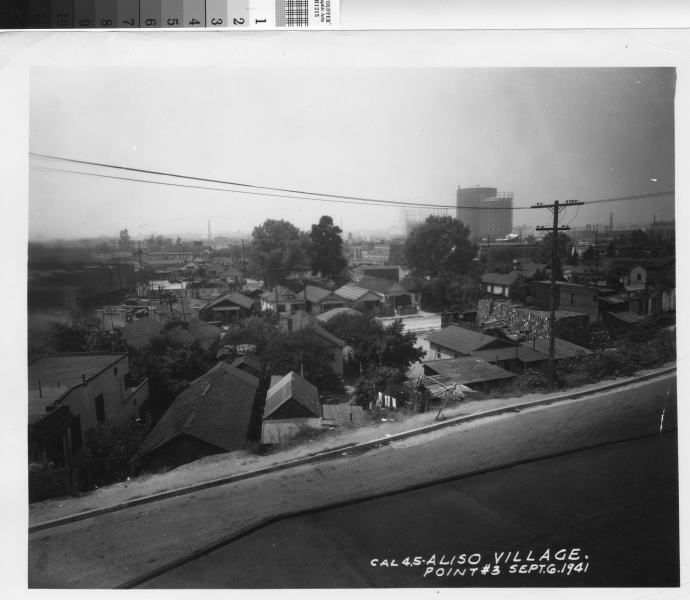
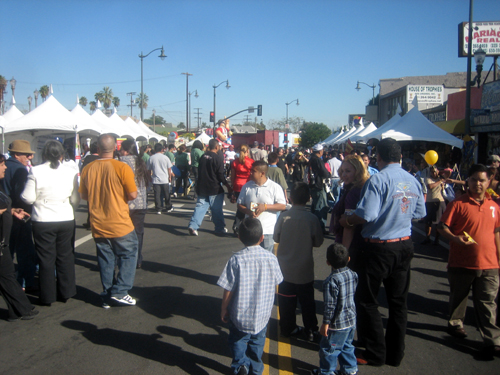
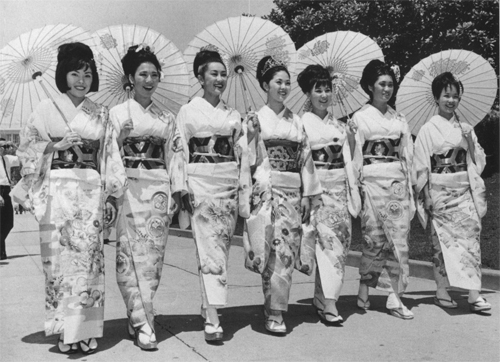
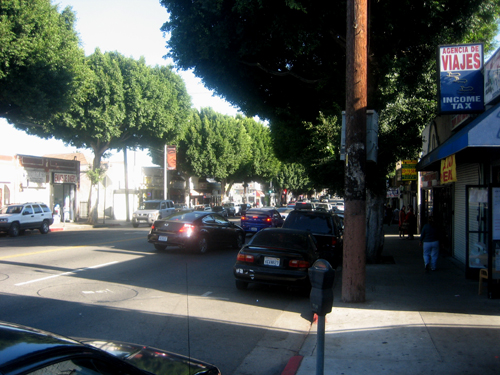
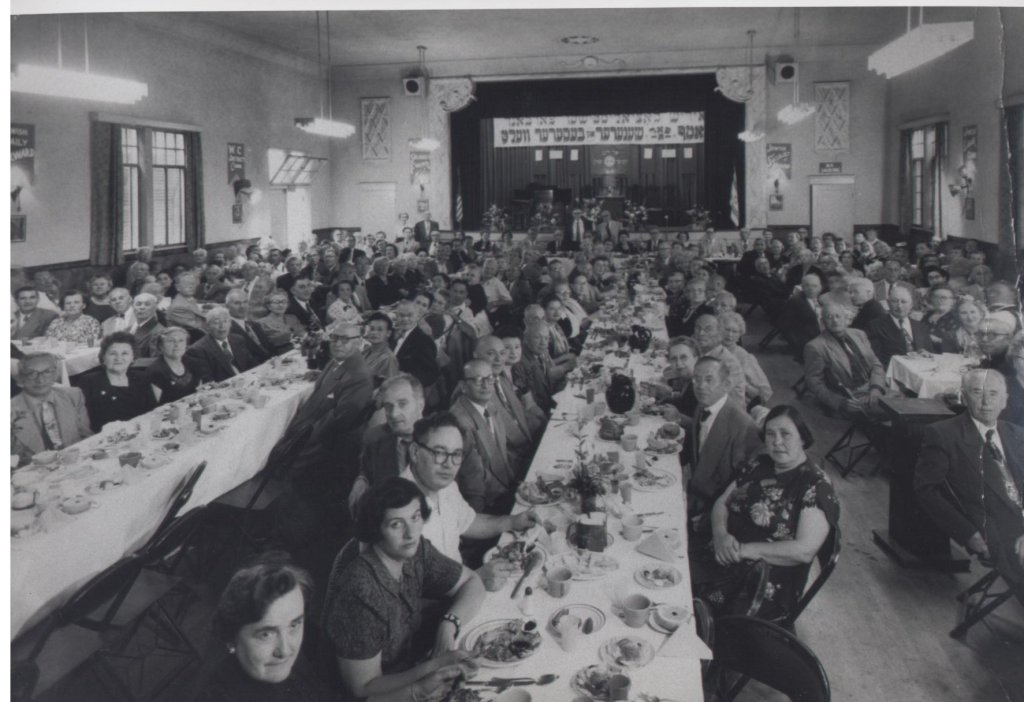




The photograph of the person identified as Mentor Huebner is not Mentor Huebner-it is of William Creber. My father was Mentor Huebner and I have lots of photos to replace this wrong one. This picture has been misidentified for years on the internet and I have tried numerous times to have it corrected. Thanks for the nice write up on my dad and you did one including my mom Louise Huebner, much appreciated. Thanks!
LikeLike
Thank you, Jessica, for the correction. I’m a fan of your both of your parents’ work. If you’d like to send me a replacement photo, I’ll replace it. In the meantime I’ll just take this image down.
LikeLike